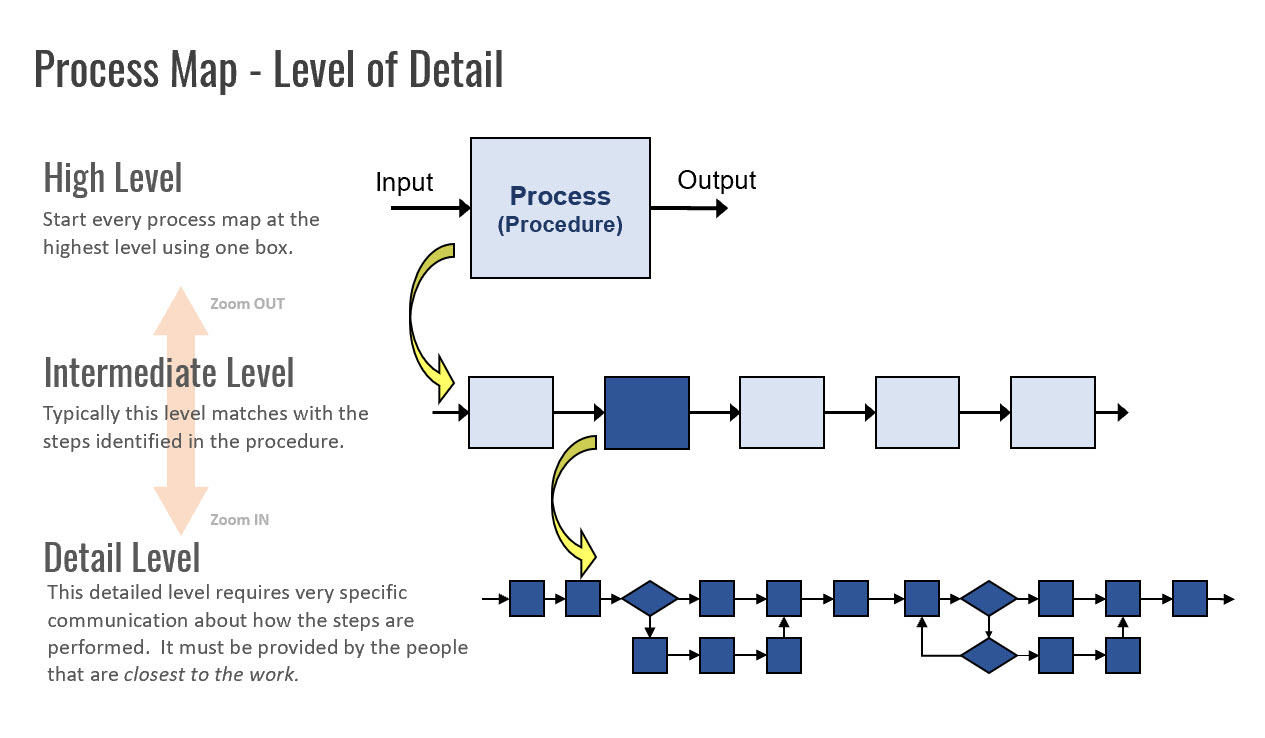Your work processes are systems, so they should be viewed with a systems perspective. It is a combination of parts (or specific steps) that come together in a specific order to produce a desired result. Any system and any work process can be viewed at multiple levels of detail.
You can view a work process at a high level—where it simply depicts an input and output. A coal-fired power plant, for example, takes coal in and produces electricity. You can view the process in more detail at an intermediate level, or for close evaluation, at the detailed level. Each perspective has inherent value.
Think of a process map as you would think of a map of a location. If you want to know the quickest way to get from Chicago to Kansas City by car, you would want to look at a map of the entire U.S. Once in Kansas City, you would need to refer to a map of the city for greater detail on how to get to the downtown business district. Once you’re downtown, you would need a street map for instructions on how to get to a specific address. With this analogy, you start at a high level and then zoom in or out based on your objectives. Process maps work the same way. It is helpful to build the higher-level maps first and then get more specific when more clarity is needed. Incorporating a systems approach when mapping work processes includes benefits like:
- Showing how everyone in the organization is tied to the process.
- Providing a tool to dive into the details even if people speak in generic terms.
- Accommodating everyone’s perspective or point of view.
- Keeping the focus on the process instead of the individual.
We can consider the levels of detail in three sections:
High Level: Features the most basic level of understanding. This can include up to a dozen boxes (or steps) of the major process components.
Intermediate Level: Identifies major handoffs between groups or departments and the significant decision points within the process. It includes enough detail to understand the workings of the process but not specific details.
Detailed Level: Captures the specific steps that an employee executes within the process, including:
- Step ownership—who is responsible for the execution of each process step
- Individual handoffs between steps—handoffs between the individuals executing the steps of the task
- How handoffs are communicated and executed—email, phone, face-to-face, etc.
- Supporting information—tools, documents, forms used to execute the steps
- Decisions points—places where decisions are made within the process

In its most simplified terms, process mapping is creating a visual representation of a process or work flow—whether it is existing or prospective. While the finished process map should be referred to on a regular basis for updating, management orientation, employee training, and validating questionable or unclear procedures, its greatest value may be found in the communication required to develop and update it.
Interested in learning more about process mapping and FMEA? Check out some of our two-hour online short courses and learn how to identify the process as a system, the appropriate level of detail needed and how to build a process map as well as how to build a cumulative Cause Map diagram for your incidents.











